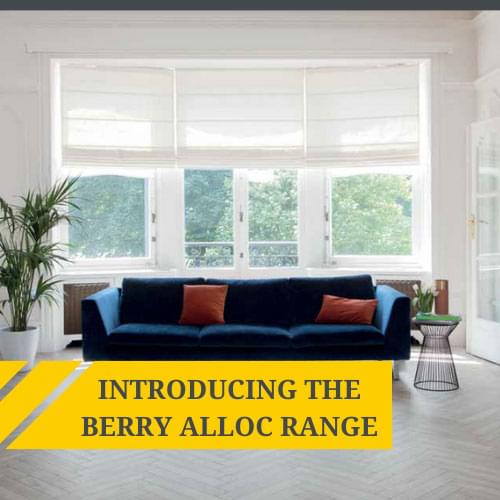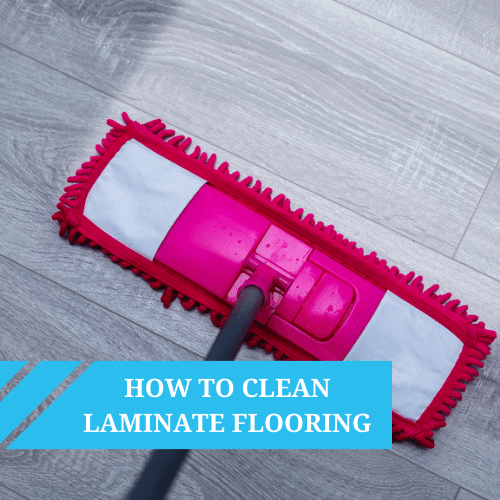We use cookies to make your experience better. To comply with the new e-Privacy directive, we need to ask for your consent to set the cookies. Learn more.
Engineered Wood Flooring vs. Laminate: Which is Best?
When it comes to flooring, the debate between engineered wood vs laminate is a common one. But which is best for your home? This comprehensive guide will help you understand the key differences between the two....
When it comes to flooring, the debate between engineered wood vs laminate is a common one. Both have advantages and disadvantages, but which is best for your home? This comprehensive guide will help you understand the key differences between the two and aid you in making an informed decision that suits your needs and preferences.
Key Takeaways
- Engineered wood and laminate flooring are both popular types of flooring with various benefits.
- Engineered wood is more expensive than laminate but provides increased longevity and a more natural look.
- Consider cost, installation method, room location/environment, underfloor heating compatibility and resale value when choosing between laminate or wood flooring.
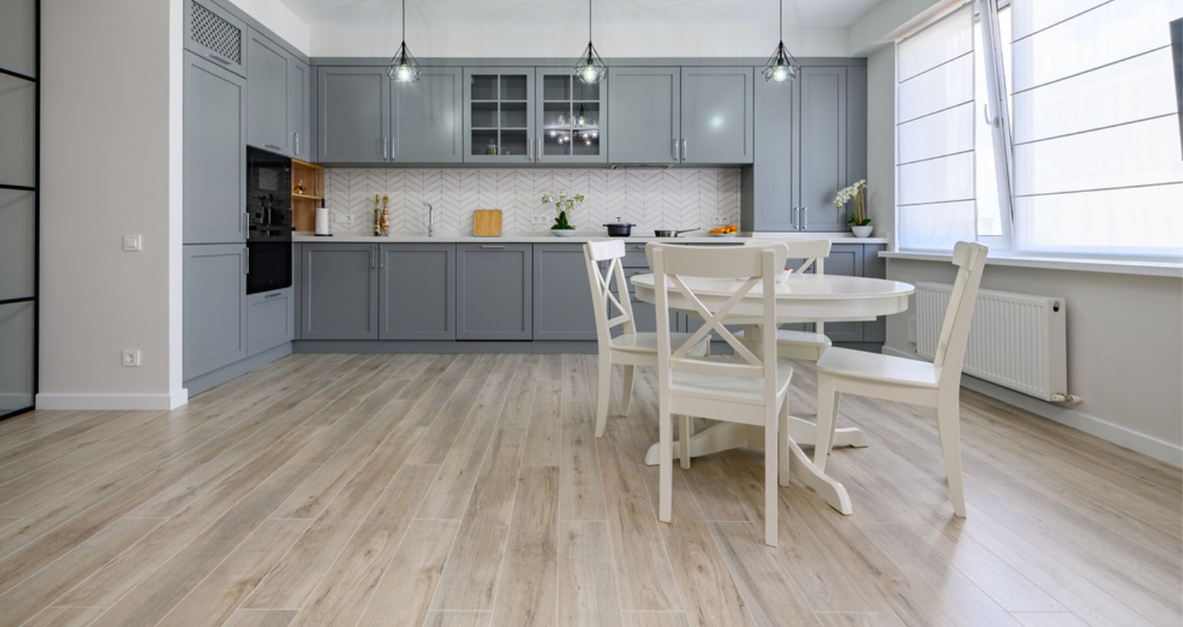

Engineered Wood Flooring
Engineered wood flooring is constructed from multiple layers of wood pressed together in a cross-grain configuration to form a plank. This cross-ply construction results in a product that is more stable and less susceptible to humidity and temperature changes than traditional solid hardwood.
The top layer of engineered wood flooring, known as the wear layer or veneer, is a thin slice of real hardwood that gives the flooring its aesthetic appeal. Top layers can be almost any type of wood, from common species like oak or maple to exotic varieties.
Laminate Flooring
Laminate flooring is a cost-effective alternative that imitates the look of real wood. It consists of a high-density fibreboard (HDF) core layer with a printed wood-look design layer protected by a durable, clear wear layer.
Flooring technology has improved drastically over the years, and laminate can now closely replicate the look and feel of genuine hardwood. This type of flooring is also incredibly versatile, and there is a vast choice of colours and styles available on the market to style your home.
The Key Differences Between Engineered Wood Flooring vs. Laminate
Both are popular flooring options, but they differ in several key aspects. Let's take a look at how engineered wood and laminate flooring differ in terms of their construction, appearance, durability, and cost.
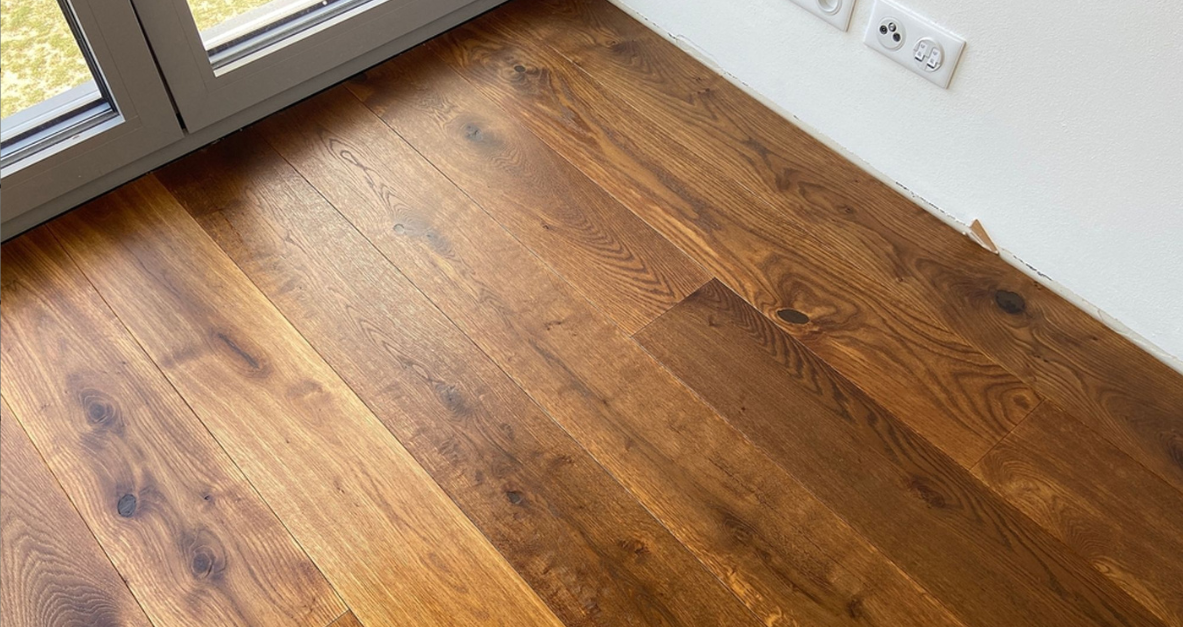

Laminate vs Wood Flooring Cost
There's no doubt, even a high quality laminate flooring is the more affordable option. You can achieve the classic look of oak flooring, for example, for a fraction of the cost of engineered wood. This makes laminate an attractive choice for homeowners on a budget who still want a high-end look.
Design Variety
Since the top layer of laminate flooring is a photographic image, it can mimic many types of materials, including various wood species, stone, and even metal. This allows for a wide range of colours, patterns, and textures, making it easy to match your décor.
By contrast, engineered wood features a real wood veneer top layer, ideal for people looking to incorporate the authentic look and feel of solid hardwood in their home.
Durability and Maintenance
Laminate flooring is known for its high durability. It is treated with an extra-tough top layer, which resilient to scratches, scuffs, and stains. This makes it a great choice for high traffic areas such as hallways, kitchens and living areas. The smooth top layer also makes laminate easy to clean and maintain, requiring basic cleaning to keep it looking its best.
Engineered wood, on the other hand, while also durable, may not be as resistant to surface damage as laminate. However, unlike laminate, engineered wood can be sanded down and refinished if it ever gets scratched or damaged, extending its lifespan.
Installation
Laminate flooring is well-known as being easy to install. The boards are designed to fold and lock into each other, a feature commonly referred to as a 'click-lock' design. This allows even novice DIYers to install laminate flooring with relative ease. As such, most laminate flooring projects can be completed within a single day.
On the other hand, installing engineered wood flooring is a more complex task. It requires more preparation, and depending on the method of installation - which could be floating, gluing, or nailing down - it may require professional help. As a result, the installation process for engineered wood flooring usually takes longer.
However, it's worth noting that while engineered wood flooring might take longer and cost more to install, it can add more value to your home.
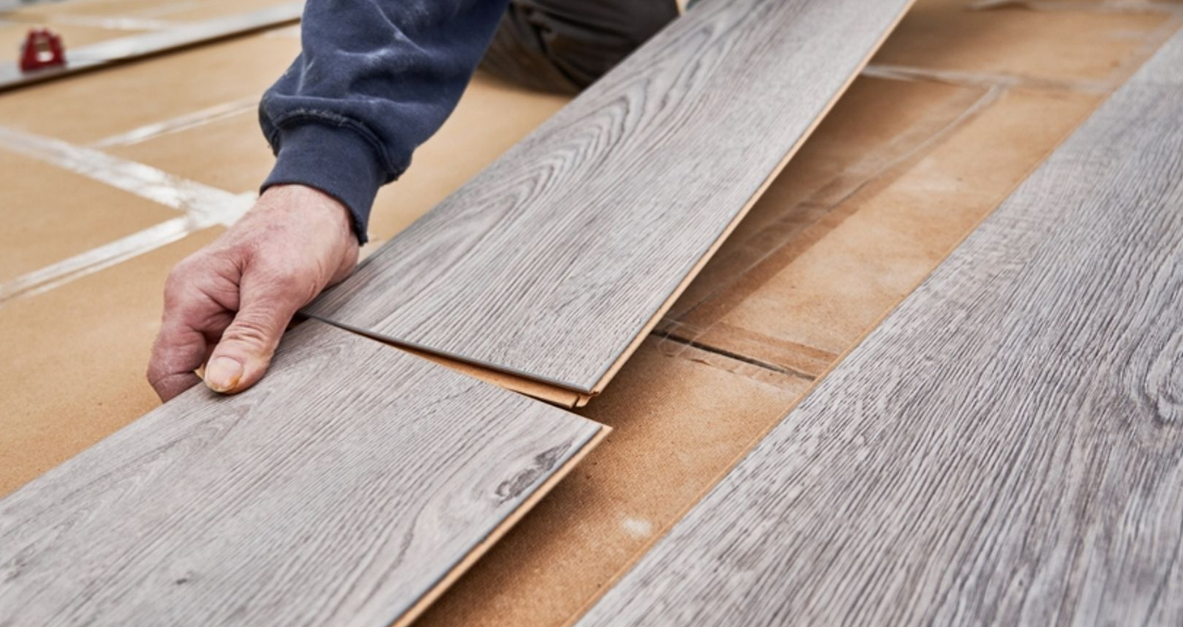

Resistance to Environmental Changes
Both laminate and engineered wood flooring have their strengths when it comes to handling changes in temperature, humidity, and moisture, but they handle these changes differently due to their different construction.
Modern laminate floors are more resistant to moisture compared to older versions, and some types are specifically designed to be water-resistant. However, laminate flooring is not completely waterproof. Excessive water can seep into the joints and under the laminate, causing permanent swelling, warping, or mould growth.
Owing to it's different wood layers bonded together in a crosswise direction, engineered wood flooring offers some moisture resistance and is less likely to shrink and expand in comparison to a real wood floor. That being said, prolonged exposure to water can cause swelling. warping or damage to the wood veneer.
Is Engineered Wood More Expensive than Laminate?
On the whole, engineered wood flooring is usually more costly than laminate flooring. This is due to the engineered wood's genuine hardwood surface and the higher-quality materials used in its construction. However, the increased durability, longevity, and resale value may justify the cost difference.
On the other hand, laminate flooring is a more budget-friendly option for those seeking a wood-like appearance without the expensive price tag of solid wood flooring. While laminate floors may not offer the same level of durability and longevity as engineered wood, they can still provide a visually appealing and functional flooring solution for many homeowners.
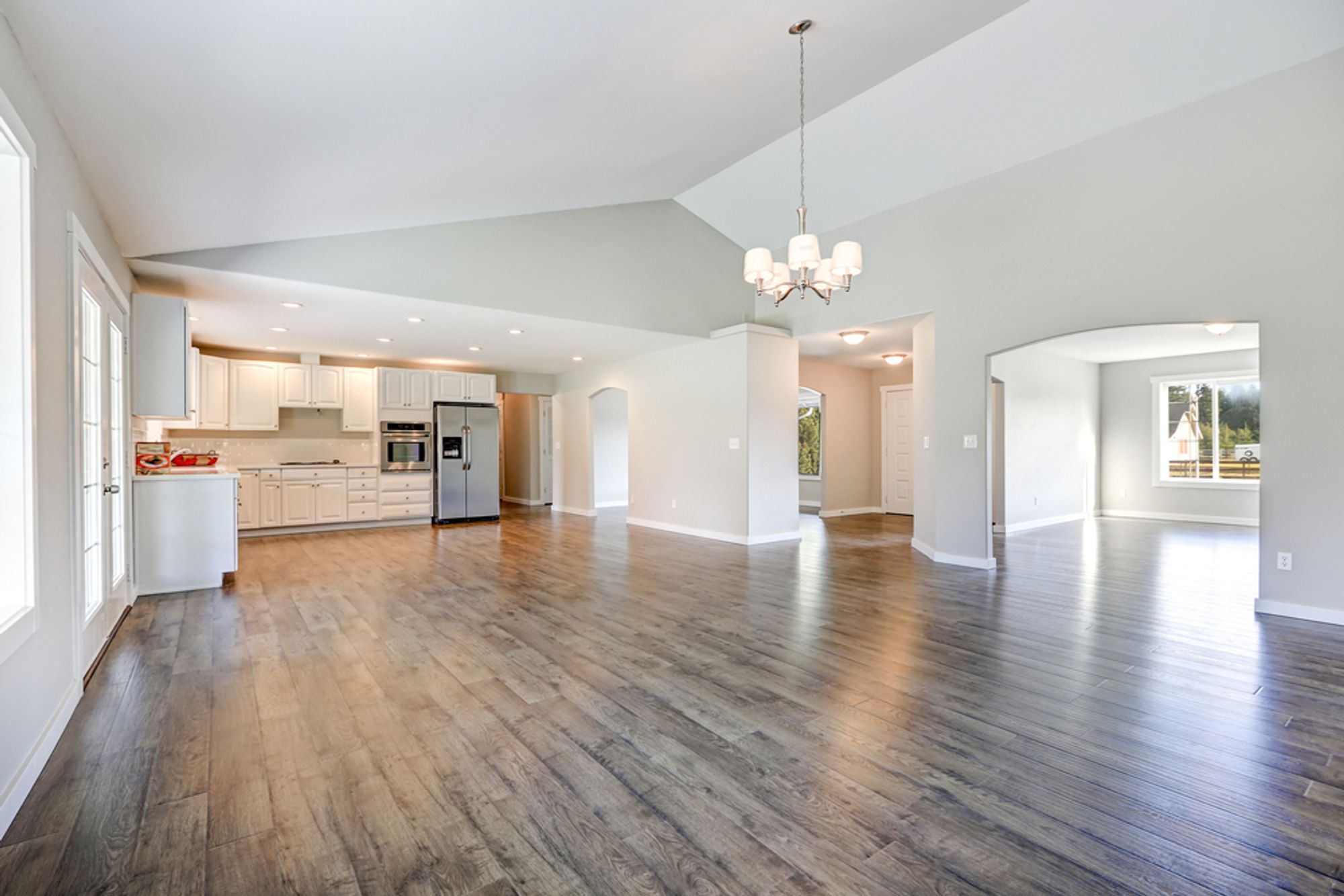

Laminate Flooring and Engineered Wood: Initial Cost
In the UK, laminate flooring is often less expensive than engineered wood flooring. Laminate flooring costs typically range from £12 to £45 per square metre.
On the other hand, engineered wood flooring may cost between £35 to £100 per square metre depending on the species, before fitting.
Installation Costs
Installation costs can also differ. Laminate flooring is considerably easier and cheaper to install, while engineered wood flooring installation costs can be higher due to the relative complexity of the process. You should make sure to factor in this additional cost when you’re comparing options.
Long-Term Expenses
While laminate flooring may be cheaper initially, it's important to consider long-term expenses as well. Engineered wood floors could potentially last longer and they can be refinished, whereas laminate floors cannot. This means that while you might pay more upfront for engineered wood, it could be more cost-effective in the long run.
Engineered Wood or Laminate: What to Consider
There are several factors to consider when choosing between engineered wood and laminate flooring for your home. Some of these factors include:
- Cost and Installation: Laminate is cheaper and easier to install, but engineered wood offers long-term value and can be sanded down and refinished.
- Underfloor Heating Compatibility: Both can work with underfloor heating, but always check the manufacturer's guidelines.
- Resale Value and Longevity: A wooden floor can boost resale value and can be refinished, potentially outlasting laminate.
- Location and Environment: For humid areas, choose laminate. For a warm, inviting atmosphere, select engineered wood.
- Design and Creativity: Engineered wood offers a classic, authentic finish, whereas laminate offers more variety when it comes to creative home décor.
So, Should You Choose Laminate or Engineered Wood Flooring?
What is better, engineered wood or laminate? Ultimately, choosing between wood or laminate flooring comes down to your budget and the specific needs of your home.
With its natural wood top layer, engineered wood offers a more authentic look and feel. It's more expensive but has a longer lifespan and could add value to your home, making it a potentially better long-term investment. However, laminate flooring can be a suitable choice if you're looking for a cost-effective, durable and easy-to-maintain option. Plus, its easy installation makes it a perfect weekend DIY project!
Feeling Inspired? Browse our wide range of laminate flooring styles to achieve a wood-like appearance on a budget.
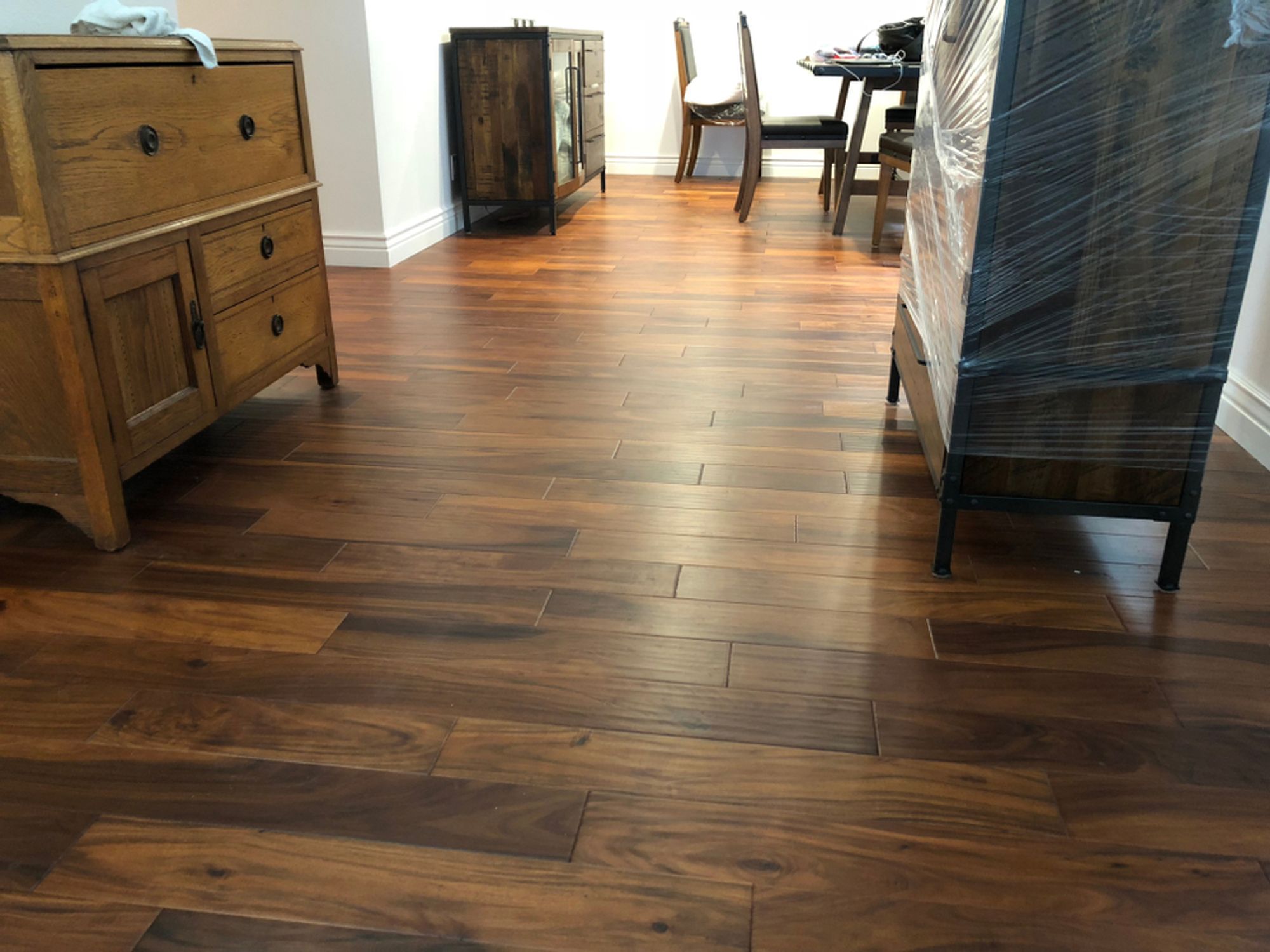

Frequently Asked Questions
Which Is Best: Laminate or Engineered Wood Flooring?
The "best" choice between laminate and engineered wood flooring depends on your specific needs and lifestyle. If you prefer a more authentic look and feel and a longer lifespan, then engineered wood may be the best choice. However, if you're seeking a cost-effective and easy-to-maintain option that can be installed quickly, laminate flooring could be the best for you.
What Are the Cons of Engineered Wood Flooring?
Despite its many benefits, engineered wood flooring does have some drawbacks. It can be more expensive in comparison to laminate. While it is more moisture-resistant than solid hardwood, excessive water exposure can still cause damage. Also, though engineered wood can be refinished, it can only be done a limited number of times depending on the thickness of the top veneer.
Do Engineered Wood Floors Scratch Easily?
Engineered wood floors are generally durable, but they can scratch, especially in high-traffic areas or homes with pets. The degree to which they scratch will depend on the hardness of the wood species used in the top layer and the finish.
What Is the Primary Difference Between Engineered Wood and Laminate Flooring?
The primary difference lies in their composition. Engineered wood flooring consists of a real hardwood veneer attached to multiple layers of plywood or HDF (High-Density Fibreboard). On the other hand, laminate flooring is entirely synthetic, composed of a high-resolution photographic image placed over a fibreboard core, coated with a clear protective layer.
Is Engineered Wood Flooring More Expensive Than Laminate Flooring?
Generally, engineered wood flooring is more expensive than laminate flooring. This is due to the fact that engineered wood contains a layer of real hardwood, which adds to its cost. However, pricing can vary depending on the quality and type of wood or laminate chosen.








